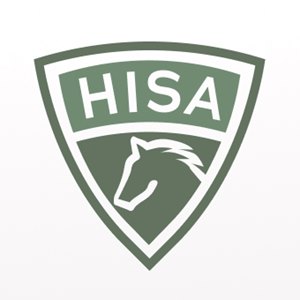HISA Proposal Would Base Billing Completely on Starts


The Horseracing Integrity and Safety Authority is seeking public comment on proposed rule changes that would target sources of possible environmental contamination of equine drug testing. Another proposed change would significantly alter how HISA bills racing jurisdictions.
Both proposals are outlined on the HISA website, along with a request for informal public comment on the potential changes.
The proposal targeting potential environmental contamination sources would aim to improve cleanliness and security of receiving barns, the number and location of restrooms on the backstretch, and have workers who interact with horses disclose any use of substances prohibited in horses. The rule change proposal also would relax restrictions on entering a horse on the veterinarians' list to race if the last hurdle to coming off the list is awaiting results of a blood sample collection.
The updated requirements for receiving barns would ask that tracks provide enough receiving barn space to accommodate horses shipping in from outside the track premises and entering a race at the track. It would require that receiving barns be exclusively used for shippers from outside the track premises and entered to race.
The draft rule would require that wood not be used as a surface material for new or renovated receiving barns. The draft rule says, "The receiving barn shall include adequate stable room and facilities including hot and cold running water, and ample stall bedding. The receiving barn shall be maintained in a clean and sanitary condition and each stall shall be thoroughly disinfected after each occupancy. After stalls are cleaned and sanitized, the empty stalls shall be secured by closing the stall doors and securing them with a serialized tamper evident security tag."
The idea is to eliminate or reduce any opportunities for contamination from previous equine residents. The proposed rule goes on to call for monitoring of the receiving barn.
"Access to the receiving barn shall be controlled by racetrack security to prevent unauthorized access," the proposed rule reads. "The receiving barn shall be equipped with high-resolution security cameras to monitor the activities in and around the receiving barn. The cameras shall cover all entry and exit points, as well as the interior areas where horses are stabled and handled."
If needed, that gathered video would be made available to HISA or its enforcement arm, the Horseracing Integrity and Welfare Unit.
The next sections of the proposed rule look to eliminate or reduce possible contamination issues linked to workers. Over the years horsemen have speculated that some equine positives could be linked to workers urinating in barn areas. The proposal calls for enough bathroom facilities for workers on the backstretch of tracks, taking into account the size of the facility and the number of people regularly present on the backstretch.
Along similar lines of concern, the proposal would require any covered person whose work duties involve physical contact with horses or in the environment where a horse eats or drinks, to disclose in writing to the horse's trainer any human medication they're taking if it is a prohibited substance in horses.
Another section of the draft rule would change requirements for coming off the veterinarians' list by allowing any horse who has successfully completed all applicable requirements except the required blood sample analysis to be entered in a race. If the covered horse is awaiting the results of the blood sample analysis in order to be released from the list, it can be entered in a race if there are at least 10 days between the date the sample was collected and the race date. If results of the blood sample collection remain pending as of 6 p.m. local time the day before the race, or if the blood sample results in an adverse analytical finding, the covered horse shall be scratched from the race entered.
The other proposal would update the rule that outlines how HISA is funded. The current formula factors both the number of starts for a jurisdiction and purses awarded in that jurisdiction. The new formula would eliminate the purse consideration from that equation and base assessments only on starts. The proposal would see this formula begin January 2026.
Under the proposal, after approval of the HISA budget and taking into account other sources of revenue, HISA shall allocate the calculation due from each state proportionally by each state's respective percentage of racing starts relative to all HISA jurisdictions.
